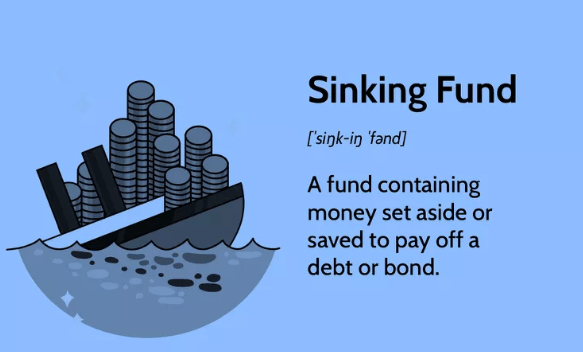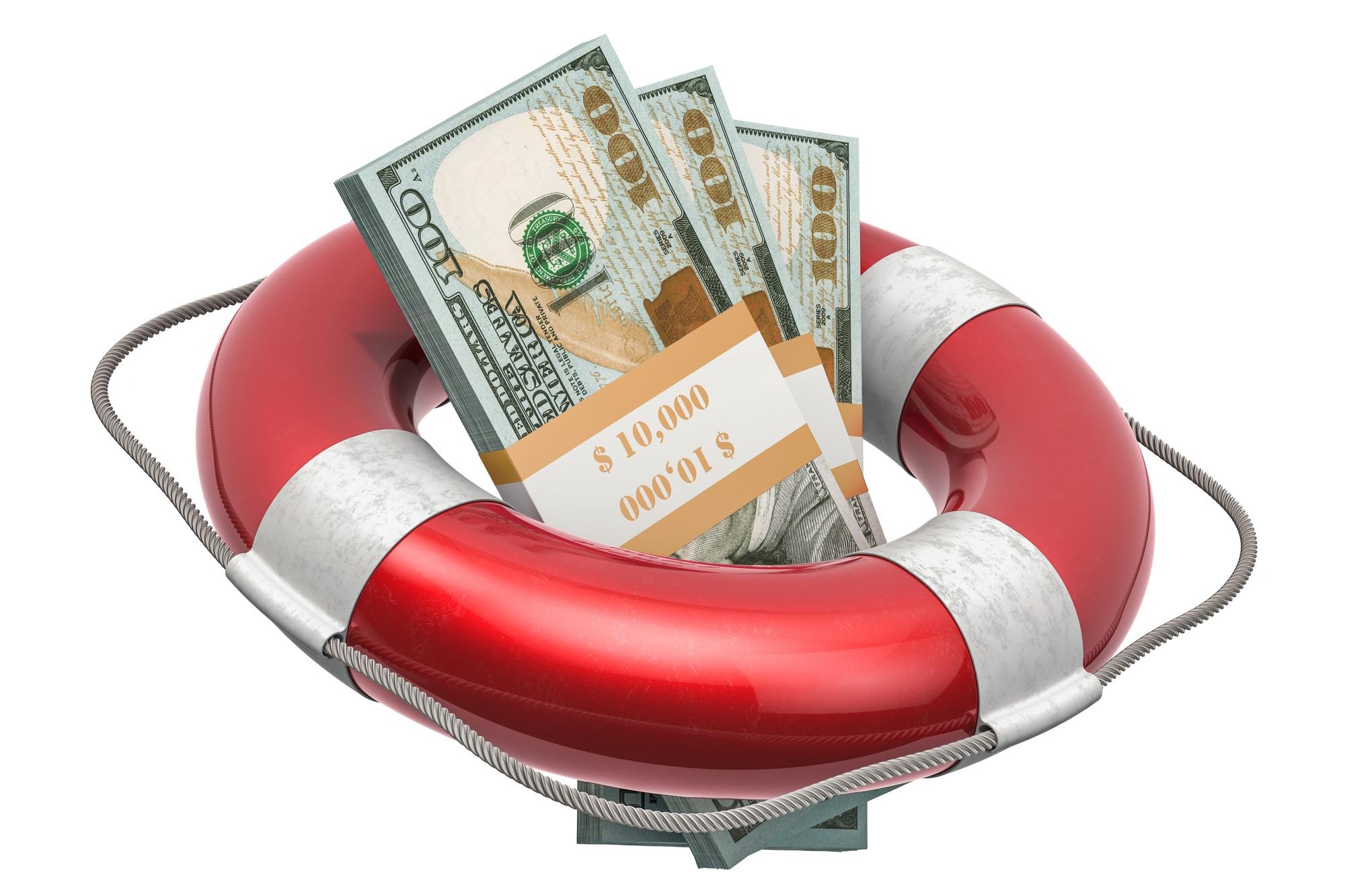When planning for financial stability, we often encounter unexpected or irregular expenses that catch us off-guard. Did you know a sinking fund is a powerful tool designed to help navigate such situations? This article will explain what a sinking fund is, how it differs from your ordinary savings account and emergency funds, and its advantages in detail.
Get ready to make an informed decision on creating your own sinking fund – let’s dive in!
Key Takeaways
- A sinking fund is a designated account where you set aside money for specific future expenses or goals, helping you avoid relying on credit or going into debt.
- It differs from a savings account and emergency fund as it focuses on preplanned expenses rather than unforeseen emergencies.
- To create a sinking fund, decide what you’re saving up for, determine the amount you need to save, choose where to store the funds, and incorporate your sinking fund into your budget.
What is a Sinking Fund?

A sinking fund is a designated account where you set aside money for specific future expenses or goals. It differs from a savings account and emergency fund as it focuses on preplanned expenses rather than unforeseen emergencies.
Sinking funds offer benefits such as financial stability, budgeting flexibility, and reduced reliance on debt.
Definition
A sinking fund stands as a type of account businesses and individuals utilize to set aside money over time for a specific financial goal or planned expense. Often found in finance, this term refers to saving small amounts regularly for large future expenses so the full cost doesn’t hit your budget all at once.
These can include anything from vacation plans, buying a new car, or even debt reduction strategies such as repaying bonds. Essentially, the fund acts as a strategic financial tool to safeguard against surprise costs and enhance personal cash flow management by spreading out larger obligations into manageable chunks.
Difference from Savings Account & Emergency Fund
The fund is different from a savings account and an emergency fund. While all three involve saving money, they have distinct purposes. A savings account is typically used to save money for general expenses or future goals, such as buying a car or taking a vacation.
On the other hand, an emergency fund is specifically set aside for unexpected expenses or financial emergencies, like medical bills or job loss.
In contrast, the fund is created for preplanned expenses that you know will occur in the future but are irregular and not part of your regular budget. This could include things like home repairs, car maintenance, or annual insurance premiums.
By allocating money to a the fund on a regular basis, you can avoid going into debt when these expenses arise.
Benefits of Sinking Funds

The funds offer several benefits that can help you manage your finances more effectively. Firstly, they provide a sense of security by ensuring that you have money set aside for future expenses or goals.
This means you won’t have to rely on credit cards or take on debt when unexpected costs arise. Secondly, the funds allow you to plan ahead and avoid financial stress. By setting aside small amounts regularly, you can gradually save up for larger expenses such as vacations, home repairs, or even a down payment on a house.
Finally, the funds promote disciplined saving and budgeting habits. They encourage you to prioritize your savings goals and stay committed to them over time. Ultimately, the funds empower you to take control of your finances and work towards achieving your long-term aspirations without sacrificing your financial stability in the present.
To support creating the fund, look at few Financial Analysis Software.
How to Create a Sinking Fund
To create the fund, start by determining what you’re saving up for and where you’re going to store the funds. Then, calculate the amount you need to save and set up your the fund in your budget.
Decide what you’re saving up for
Identifying your savings goal is the first step in creating a sinking fund. Think about what you want to save up for, whether it’s a vacation, a new car, or a down payment on a house.
By clearly defining your goal, you can determine the amount of money you need to save and create a realistic plan to achieve it. Whether it’s something you need or something that brings joy to your life, having a clear purpose for your savings will motivate you to stay disciplined and committed to reaching your financial goals.
Decide where you’re going to store your sinking fund
To effectively manage your sinking fund, it’s important to decide where you’re going to store your money. You have a few options for this. One option is to open a separate bank account specifically for your fund.
This keeps the money separate from your everyday spending and helps you track the progress of your savings more easily. Another option is to use an online budgeting tool or app that allows you to create virtual envelopes for different goals, including your fund.
This can help you stay organized and visually see how much progress you’ve made towards your goal. Whatever method you choose, make sure it’s easily accessible so that you can add money regularly without any hassle.
Determine the amount you need to save
Calculate the amount you need to save for your fund by considering your goal and the timeline in which you want to achieve it. Break down the total cost of what you’re saving for into smaller, manageable increments.
This will help determine how much money you need to set aside each month or pay period. Be realistic about your current financial situation and prioritize which goals are most important to you.
By determining a specific savings target, you can create a clear plan and stay motivated as you work towards reaching your goal.
Set up your sinking fund in the budget
To set up your sinking fund in the budget, start by clearly identifying what you are saving up for. Whether it’s a vacation, a new car, or a down payment on a house, having a specific goal will help you stay motivated and focused.
Next, decide where you’re going to store your sinking fund. Some people prefer to open a separate savings account specifically for their sinking fund, while others might choose to keep it in cash or invest it.
Once you’ve determined the storage method, calculate the amount of money you need to save each month to reach your goal within your desired timeframe. Finally, incorporate your sinking fund into your budget by allocating the necessary funds each month towards this goal.
How Many Sinking Funds Should I Have?

When it comes to setting up sinking funds, the number you should have depends on your individual financial goals and priorities. It’s recommended to have multiple sinking funds for different expenses or goals that you are saving towards.
For example, you might have separate sinking funds for car repairs, home improvements, vacations, or even holiday shopping. By having separate funds for each specific purpose, you can better track your progress and ensure that the money is allocated appropriately when the time comes.
This approach allows you to save more effectively and avoid dipping into other savings or emergency funds for these specific expenses in the future. Ultimately, the number of sinking funds you need will depend on your personal circumstances and financial objectives.
In summary: Determine how many different expenses or goals you want to save for and create a corresponding sinking fund for each one to keep your finances organized and on track.
Conclusion
Creating a sinking fund is an essential step in effective financial planning. By setting aside money for specific goals and expenses, you can avoid relying on credit or going into debt.
With careful budgeting and determination, anyone can create a sinking fund to secure their financial future. Get started today and take control of your finances!
FAQs
What is a sinking fund?
A sinking fund is a reserve or reserve fund that you create as part of your personal finance strategy to save for specific long-term goals.
How can I start my own sinking fund?
You can start your own sinking fund by doing financial planning, determining what you want to save for, and then regularly putting money away in an investment or savings account specifically dedicated for this purpose.
Can a sinking fund help with retirement planning?
Yes! Incorporating a sinking fund into your retirement planning can assist in wealth accumulation and managing risks associated with asset allocation and funds management.
Where should I keep my sinking funds?
For safety purposes, it’s best practice to store your sink funding in a secure place such as an investment vehicle or savings account under the risk management principle.




